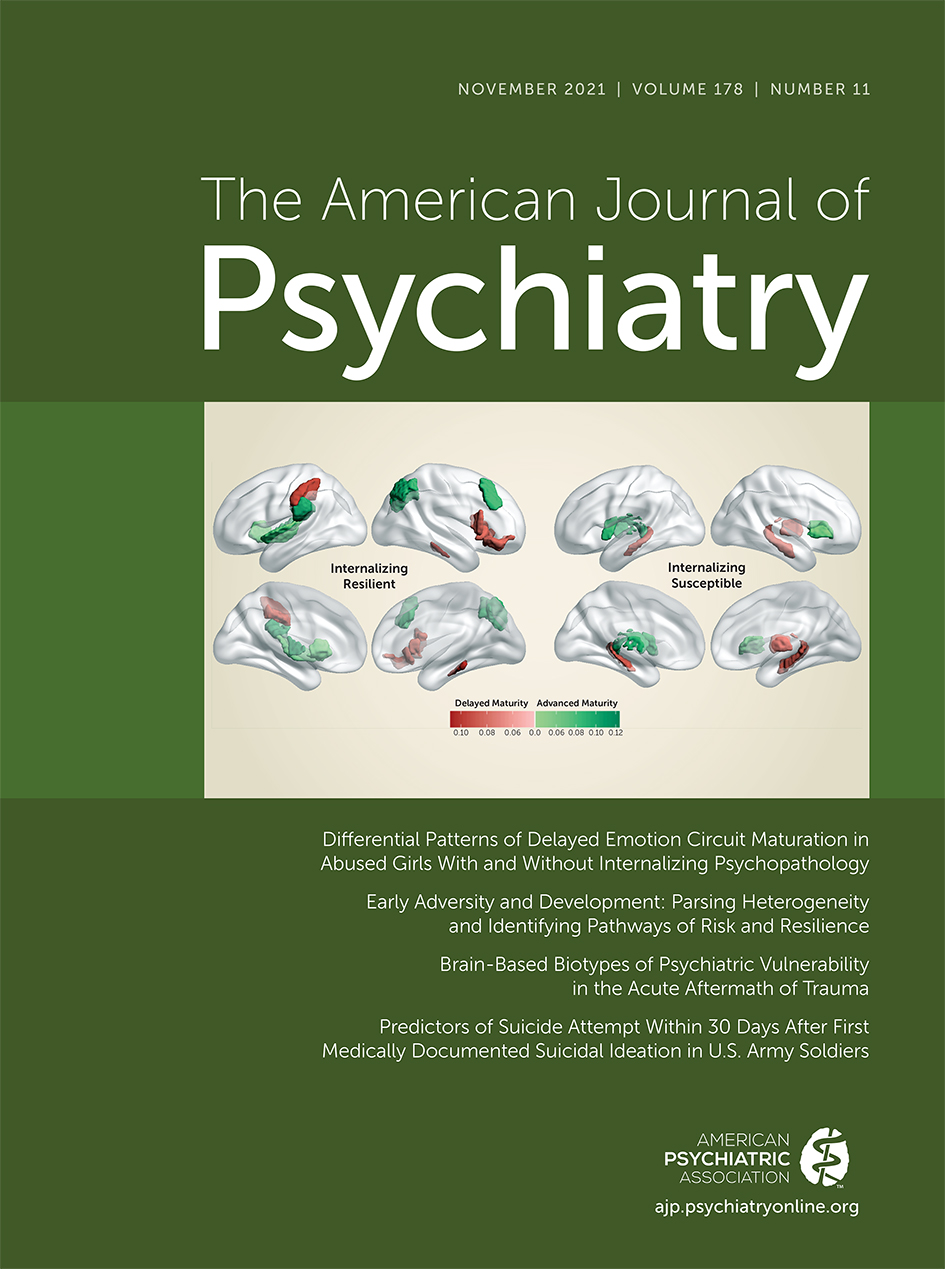Differential Patterns of Delayed Emotion Circuit Maturation in Abused Girls With and Without Internalizing Psychopathology
Abstract
Objective:
Childhood abuse represents one of the most potent risk factors for developing psychopathology, especially in females. Evidence suggests that exposure to early-life adversity may be related to advanced maturation of emotion processing neural circuits. However, it remains unknown whether abuse is related to early circuit maturation and whether maturation patterns depend on the presence of psychopathology.
Methods:
A multisite sample of 234 girls (ages 8–18 years) completed clinical assessment, maltreatment histories, and high-resolution T1-weighted structural MRI. Girls were stratified by abuse history and internalizing disorder diagnosis into typically developing (no abuse/no diagnosis), resilient (abuse/no diagnosis), and susceptible (abuse/current diagnosis) groups. Machine learning models of normative brain development were aggregated in a stacked generalization framework trained to predict chronological age using gray matter volume in whole-brain, emotion, and language circuit parcellations. Brain age gap estimations (BrainAGEs; predicted age minus true chronological age) were calculated as indices of relative circuit maturation.
Results:
Childhood abuse was related to reduced BrainAGE (delayed maturation) specific to emotion circuits. Delayed emotion circuit BrainAGE was further related to increased hyperarousal symptoms. Childhood physical neglect was associated with increased whole-brain BrainAGE (advanced maturation). Neural contributors to emotion circuit BrainAGE differed in girls with and without an internalizing diagnosis, especially in the lateral prefrontal, parietal, and insular cortices and the hippocampus.
Conclusions:
Abuse exposure in girls is associated with a delayed structural maturation pattern specific to emotion circuitry, a potentially adaptive mechanism enhancing threat generalization. Physical neglect, on the other hand, is associated with a broader brain-wide pattern of advanced structural maturation. The differential influence of fronto-parietal cortices and the hippocampus on emotion circuit maturity in resilient girls may represent neurodevelopmental markers of reduced psychiatric risk following abuse.



